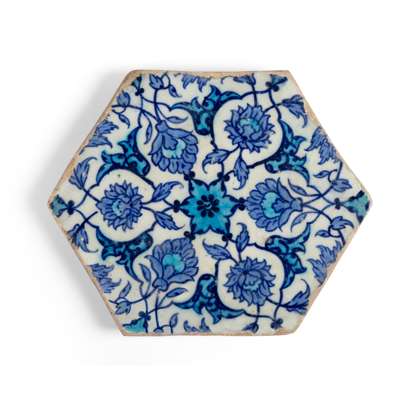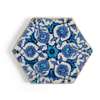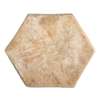
Lot 4

AN IZNIK BLUE AND WHITE POTTERY TILE
OTTOMAN TURKEY, CIRCA 1530-40






Auction: 10 December 2025 from 14:00 GMT
Description
of hexagonal form, decorated in cobalt blue and turquoise under a transparent glaze with intertwined rumi and khatai motifs
Dimensions
24.5cm x 24.5cm
Provenance
Clement Massier (France, 1845-1917) – Golfe Juan Collection.
Clement Massier was a master ceramicist, based in Golfe Juan near Cannes, who specialised in Art Nouveau pottery with iridescent glazes.
Footnote
This tile belongs to a small group produced around 1530 which are related to the famous Circumcision Room (Sünnet Odasi) tiles in the Topkapi Palace, Istanbul. Our tile shares strong aesthetic and stylistic similarities (see Ahmet Ertuğ and Walter Denny, Gardens of Paradise – 16th Century Turkish Ceramic Tile Production, Ertuğ & Kocabıyık, 1998, p.76).
The rumi and khatai motifs, seen on the present tile, have a special place in the history of Ottoman art. The first is called rumi by the Ottomans, islimi by the Persianate dynasties and arabesque by the Europeans. There are divergent views on the origin of the motif, some regarding it floral in origin, others as zoomorphic, such as the theory that it derives from the wings of birds or mythical animals in central Asian art. The motif developed in Samarra in the 9th century and spread to the Islamic lands. The khatai blossom, on the other hand, consists of stylised flowers and leaves depicted from above and from the side. There are various hypothesis about the origin of the khatai motif being Chinese, particularly the lotus blossom.
For a closely related example with an identical design in the Louvre Museum, Paris see inv. no. OA 3919/60, and for two examples in the Victoria and Albert Museum, London, see inv. nos. 1019-1892: 507-1900.
This tile is therefore an excellent example of these imperial-quality ceramics with superb provenance.





